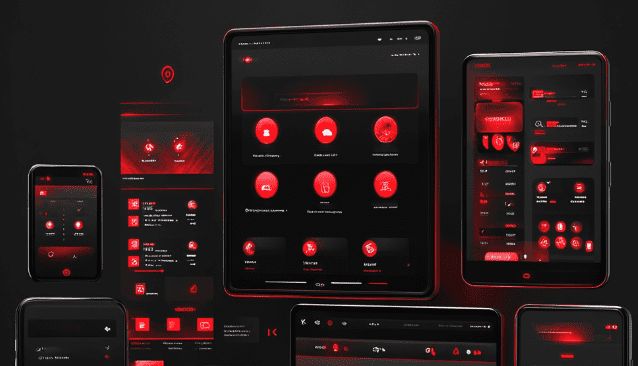The Real Impact of Poor User Support on Productivity
What’s the true price your business pays when technology support fails your team? Poor user support reaches way beyond temporary frustrations and hits your bottom line in ways you might not notice until it’s too late.
Your team’s productivity doesn’t just dip, it plummets as they face difficult interfaces and poor user experiences daily. Many organizations don’t realize how poor support systems drain resources and kill employee motivation. These small inconveniences quickly become major operational roadblocks that send shockwaves through entire companies.
Table Of Contents
- How poor user support shows up in daily work
- The hidden cost of poor support on team productivity
- Long-term business risks caused by poor user experience
- Conclusion
- FAQs
This piece will reveal what inadequate technical support costs your workforce productivity. We’ll get into how these problems show up in daily operations. You’ll learn about the hidden costs to your business and the long-term risks that could hurt your competitive edge if left unchecked.

How Poor User Support Shows Up In Daily Work
Poor technical support quietly undermines productivity in offices worldwide. These problems might not show up in your metrics immediately. Your most dedicated team members slow down because they don’t get the help they need.
A typical workday with poor user support demonstrates many problems. Slow response times top the list. Employees submit tickets and receive silence or useless automated responses. Their issues remain unresolved for hours or days, which prevents them from doing their work.
Contrast this with responsive support where teams fix problems right away. A client who worked with our team at Hyperion Networks said, “Issue was addressed right away as usual”, showing how rare quick responses feel to people who deal with bad support systems.
Business changes reveal more support problems. Your team faces preventable downtime because IT experts don’t get involved early enough. This leads to configuration errors and security risks when you move locations, add employees, or upgrade systems.

Difficult-to-use interfaces make everything worse. Employees waste time fighting with technology instead of using it productively. This waste adds up fast as it affects your whole workforce.
Bad technical support lacks proper system monitoring. Support teams only react after something breaks instead of preventing problems. Your employees sit idle while they wait for someone to fix the issue.
The unpredictable nature of poor support creates the biggest headache. Nobody knows if help will arrive in an hour or next week. Employees can’t plan their day properly. This uncertainty creates stress that affects everyone’s work quality.
Each disruption might seem small on its own. Together, these problems create major roadblocks that hurt your entire operation’s productivity.

The Hidden Cost Of Poor Support On Team Productivity
Business owners often miss the hidden financial burden of subpar IT support that lies beneath day-to-day operational problems. The numbers would shock most executives who look beyond the obvious frustrations.
Here’s a question worth asking: Do you know how much time your team wastes while waiting for IT problems to get fixed? The numbers tell a shocking story. On average, businesses save $5,000 per minute when they reduce downtime through quick support. This isn’t just theory – your company loses real money every minute technical problems remain unsolved.
Bad support creates a domino effect of lost productivity through:
- Extended downtime periods that leave employees unable to work
- Staff members jumping between tasks as they try different workarounds
- Extra overtime costs to make up for lost time
- Lower job satisfaction that leads to staff turnover
Quality support makes a world of difference. Bad support lets problems drag on for days. Good providers fix issues within 1-4 hours, that’s 5x faster than industry averages. Better yet, they spot and fix problems before they disrupt your workflow, which cuts downtime by 90%.

A controller’s feedback shows the real value of responsive support: “Thank you for your help! I appreciate you for getting the issues resolved in a timely manner. Everything is working perfectly now.” This response emphasizes something crucial, bad support does more than waste time. It creates lasting stress that hurts creativity and focus long after fixing the immediate problem.
Bad user experience with technical systems pushes employees to create their own inefficient shortcuts. These unofficial fixes rarely make it into documentation, which leaves gaps in knowledge when people leave the company.
The drain on productivity goes beyond specific IT problems. Staff members who know they can’t count on proper support hold back from fully committing to technology-dependent projects. This creates an ongoing drag on performance.
Long-Term Business Risks Caused By Poor User Experience
Poor user support does more than just hurt daily productivity, it creates weak spots that could destroy your business. Technical problems that don’t get fixed properly pile up damage over time in ways most companies don’t see coming.

Your security takes the first big hit when support systems aren’t up to par. Your business becomes an easy target for cyberattacks that could shut everything down if teams don’t keep up with updates and monitoring. These security holes grow slowly as support teams fall behind on their vital upkeep tasks.
Competitive disadvantage emerges when your systems can’t keep up. Your team gets stuck dealing with unreliable technology while competitors with strong support systems move forward fast. This tech gap becomes impossible to close, especially when digital tools shape customer experience.
Client retention takes a massive hit from weak support. Our work at Hyperion Networks shows businesses with quick IT responses keep 99% of their clients. Companies with bad support can only watch their frustrated clients leave.
The culture changes for the worse over time. Teams stop trying state-of-the-art solutions when they’re used to working around tech problems. Everyone switches to survival mode instead of focusing on growth.

Money problems go way beyond lost productivity. Old systems need complete replacements that cost by a lot more than regular maintenance would have. Fixing failing systems wastes money that could boost strategic projects.
It also gets harder to hire and keep good people. Top talent won’t stick around where technology holds them back instead of helping. This starts a downward spiral – less talent means worse capabilities.
Bad user support doesn’t just slow things down – it changes your whole competitive position and puts your company’s future at risk.
Conclusion
Bad user support costs your business way more than you might think. This piece shows how small technical support problems grow into major operational hurdles. These problems threaten both your current productivity and your business’s long-term success.
Without doubt, bad support shows up daily through slow responses, reactive fixes, and hard-to-use interfaces. Your team can’t perform their best with these obstacles. Small disruptions pile up fast – minutes of downtime turn into thousands in lost productivity. Quality support systems fix problems five times faster than poor ones and cut down on wasted time significantly.
The immediate costs aren’t even the biggest concern. Bad technical support slowly weakens your competitive edge. Security gaps widen, clients leave, and your workplace becomes stuck fixing technical problems instead of moving forward. These factors combine and put your market position at risk, along with future growth.
Here’s the good part, you can prevent all of this. Your business can turn technology from a constant problem into a real advantage by making responsive, proactive technical support a priority. Your team needs tools that work naturally, not systems that keep breaking their flow and holding them back.
Remember, every minute your employees fight with bad support means one less minute serving customers, developing ideas, or pushing your business ahead. The choice couldn’t be clearer: invest in quality support now, or pay much more later through lost work, missed chances, and a weaker market position.
FAQs
How does poor user support impact daily work productivity?
Poor user support manifests in slow response times to IT issues, unresolved tickets, and lack of clear communication. This leads to extended downtime, constant context-switching, and increased stress among employees, significantly hampering daily productivity.
What are the hidden costs of inadequate technical support?
The hidden costs include lost time waiting for issue resolution, decreased employee satisfaction, higher turnover rates, and the development of inefficient workarounds. On average, businesses can save $5,000 per minute by minimizing downtime through prompt support.
How does poor user experience affect long-term business risks?
Poor user experience can lead to security vulnerabilities, competitive disadvantage, decreased client retention, and stifled innovation. It can also result in higher costs for system overhauls and difficulties in attracting and retaining top talent.
What are the signs of effective user support?
Effective user support is characterized by quick response times, proactive problem-solving, and user-friendly interfaces. Quality support systems typically resolve issues within 1-4 hours, which is five times faster than industry averages, and can reduce downtime by up to 90%.
How can businesses improve their user support to enhance productivity?
Businesses can enhance productivity by prioritizing responsive and proactive technical support. This includes investing in efficient support systems, providing regular training and updates, implementing user-friendly interfaces, and fostering a culture of continuous improvement in IT support services.
Hyperion Networks – Your Solution for Reliable, Productivity-Boosting User Support
→ Fast, effective user support to keep your team focused
→ Proactive issue resolution to reduce downtime
→ Customized solutions that enhance employee efficiency and satisfaction
Get In Touch With Us to Strengthen Your Support and Boost Productivity!
⭐⭐⭐⭐⭐ Rated 4.9/5 by Satisfied Clients

About Joe
Joe Ray is a seasoned technology executive with a proven track record of leadership and innovation in the IT and telecommunications industry. As the President and CEO of Hyperion Networks, Joe has been instrumental in guiding the company’s growth and helping businesses leverage advanced technology solutions to meet their evolving needs. With over a decade of experience spanning roles such as Network Engineer, Network Technician, and Network Administrator at companies like Sharp Business Systems, Knox County Schools, and SHIELDS Electronics Supply, Joe’s diverse background brings a wealth of technical and managerial expertise to the table.
Related articles:
A Business Owner’s Guide to Choosing the Right Managed IT Provider

